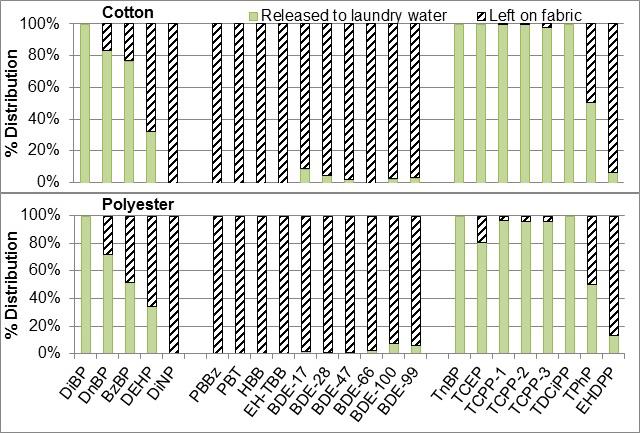In recent years, litigation attorneys and environmental epidemiologists have attempted to link flame retardants, which were put in furniture and electronics to prevent immolation by national mandate, to health problems. Studies have shown that the substances, or their constituents, can leach out of products, and end up in indoor dust, over time. In a world where we can now detect parts per quadrillion, they can also be found in us.
A new paper in Environmental Science&Technology discusses how flame retardants in our homes could also be ending up in surface water, via our laundry.
Previous studies have measured elevated levels of flame retardants in wastewater going into and coming out of treatment plants. Researchers have guessed that some of the compounds are getting transferred from indoors to the outdoor environment when retardant-containing clothes are laundered, and the wastewater makes its way to rivers and lakes. Miriam L. Diamond and colleagues wanted to test that belief.
In a pilot study, the researchers found that cotton and polyester fabrics accumulate flame retardants and plasticizers called phthalates from the air in an indoor office environment. When the fabrics were laundered, a range of these substances flowed into the wash water, which ultimately gets treated and released into the environment. The results could have implications for both aquatic life and people, the researchers say.







Comments